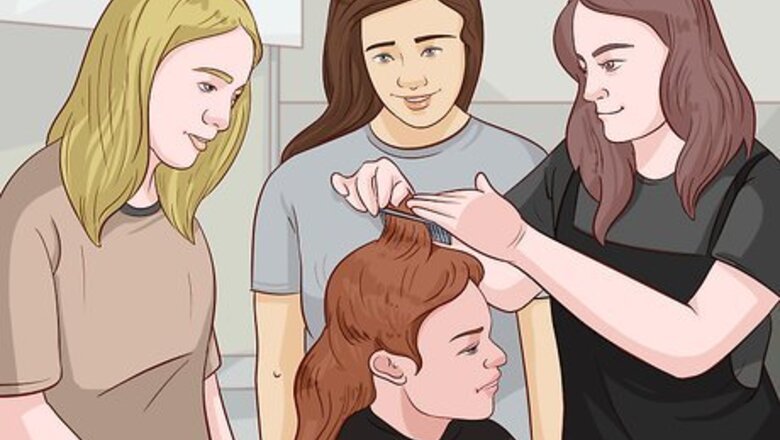
views
Choosing a Career Path
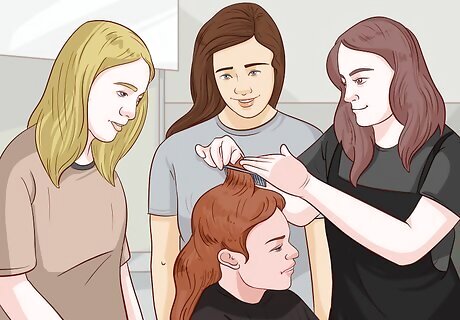
Attend cosmetology school if you want to offer services as a stylist. Trichologists help people with hair loss, alopecia, and other scalp disorders. This makes the salon an excellent setting for a trichologist. Many trichologists offer their services through a salon or as an extension of their work as a hairdresser. Apply for a cosmetology program and complete the coursework if you want to become a trichologist that cuts and styles hair. Becoming a certified cosmetologist takes 2–3 years. There are very few trichologists that work exclusively in the field of trichology. Most trichologists work either as hairdressers or hair restoration specialists.

Earn an associate’s degree in hair restoration to work at a clinic. Some trichologists work at hair restoration clinics and help people with hair loss. Trichologists often work as lab assistants, consultants, and aides for transplant surgeons. To enter this field, get an associate’s degree in hair restoration, medical transcribing, or cosmetology. Search online and call your local community college to find an associate’s program that specializes in hair restoration.Tip: There are hair restoration certification programs that you can earn, but many of them aren’t considered authoritative and they aren’t required to work in the industry. An associate’s degree takes 2 years to complete. These degrees can often be completed online.
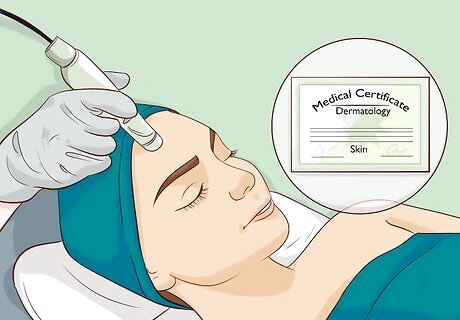
Get a medical degree in dermatology to specialize in skincare. If you really want to be an expert in your field, get a medical degree in dermatology before you pursue a trichology certification. After getting your undergraduate degree, apply for medical school and specialize in dermatology. Complete 4 years of coursework and 3 years of clinical residency. Then, pass the MCAT to become board certified in your field. As a clinical trichologist, you’ll work at a hair restoration clinic or hospital where you’ll examine patients and prescribe medications for hair loss. Becoming a board-certified dermatologist typically takes 8–10 years. If you want to become a hair restoration surgeon, you’ll need an additional 2–4 years of medical school to earn your dermatological surgeon’s certification.
Selecting a Trichology Program
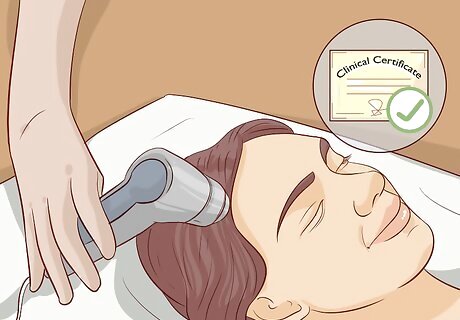
Get a clinical certification if you want to focus on medicine. Clinical certifications take longer to complete and are more expensive. They’re more thorough and emphasize the medical components of trichology. This makes clinical certifications the best option if you plan on working with patients in a clinical context. To pass a clinical program, you typically have to complete an observation or residency with a practicing hair loss clinician.
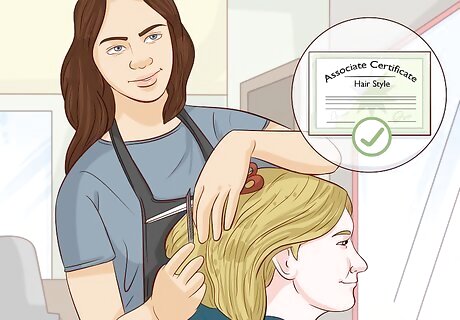
Select an associate certification if you want to style hair or assist. Associate programs focus on the basics of scalp health and hair restoration. Associate certifications are the most efficient if you plan on working in a salon or at a hair restoration clinic as a clerk, consultant, or lab assistant. These certifications are cheaper and generally shorter than clinical certificates. Some associate programs also focus on the business component of trichology. If you are hoping to work at a hair restoration clinic as a salesperson or marketing specialist, this is the best program for you.

Look for an in-depth program with an academic component. If a program requires essays, coursework, and takes at least 6 months to complete, it’s probably a reputable program. You need to understand a lot about alopecia, hormonal therapy, skin oils, and infectious diseases, which requires a lot of research and reading. A rigorous program will prepare you to adequately help your future clients and patients. In-depth clinical programs typically take 2–3 years to complete. Associate programs take roughly 6–18 months to complete. Trichology is a relatively new field. It can be difficult to figure out what is legitimate and not, so look into potential programs thoroughly to ensure that they’re academically rigorous.

Avoid programs that advertise quick certifications. A high-quality trichology certification takes at least 6 months to complete. Stay away from programs that advertise certifications that you can earn in a few days or weeks. These programs won’t be very in-depth and you won’t be adequately prepared for a career in trichology. Look at a program’s syllabus to see how thorough the program actually is.Tip: Don’t worry about programs that advertise a 2-3 day hair practitioner class in addition to their certification program. These classes are just seminars for people looking for introductory information about trichology. While trichologists are not doctors, they are expected to be certified. However, there are no regulations surrounding the certification process. This means that there are a lot of poor programs out there.

Apply for the program online and pay the tuition to begin. Once you find a certification program that suits you, apply online. Fill out an application and enter your personal information. Pay the tuition to begin your online studies and start your classwork. Trichology programs typically cost $500–3,000 per year. Because trichology is not a particularly popular occupation, there are very few in-person classes. Almost every trichology certification is earned online.
Earning Your Certification

Attend your online lectures to learn as much as possible. Don’t skip class and do your best to focus during lectures. Take notes and review them before each class to keep material fresh in your mind. Read the required textbooks as they’re assigned to ensure that you learn everything you need to know about trichology. The classes and lectures will cover glands, hair anatomy, types of hair loss, and herbal supplements. There is a lot of material to learn, so stay focused in class to ensure that you don’t miss important information. Trichology programs are typically pretty intimate. Participate as much as possible to build good relationships with your teachers. You may need their letters of recommendation in the future.

Submit your essays, homework, and projects to earn passing marks. Over the course of the program, you’ll be assigned essays, research projects, and short response quizzes. Submit all of your coursework as it is assigned to ensure that you stay on track to graduate on time. Possible essay topics include research papers on hair anatomy, clinical tools, or the history of hair restoration. You may need to create projects to demonstrate your understanding of complex topics. For example, you may be required to create a presentation on diagnosing alopecia or perform a mock consultation with a client.

Pass the final exam to earn your certification. Once you’ve submitted all of your coursework, you’ll need to take a final exam to pass the course. The contents of your final exam will differ based on your specific program and type of degree. These exams are usually 100-200 questions and will test your ability to diagnose hair loss, identify dangerous symptoms, and explain key concepts in the field. Once you take the exam, wait to receive your certification in the mail or online.Tip: These exams are almost always administered in a private testing facility where you won’t be allowed to bring your phone or notes. Follow your teacher’s instructions when it comes to signing up for your final exam. Some programs offer additional study guides and test prep in addition to the classes that you’ve taken. Sign up for the test prep class or buy a study guide to ensure that you understand the format of the exam.
Working as a Trichologist

Join a professional organization to network and improve your craft. Search online to find a professional trichology organization in your country. Pay the membership fee and present your credentials to join the organization. This way, you can meet other people in your field, access ground-breaking research, and add another credential to your resume. The most popular and authoritative organization is the Association of Registered Trichologists. You can visit their website at https://theart.org.uk/. Another popular choice is the World Trichology Society. Visit them online at http://worldtrichologysociety.org/. The cost of joining a trichology organization are typically $100-300 a year.
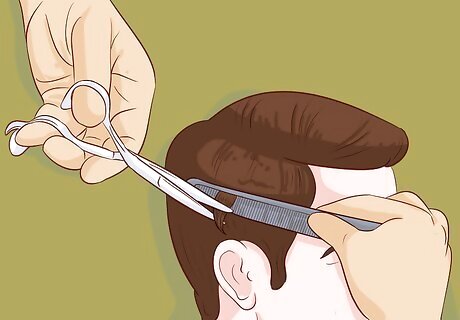
Help clients disguise and prevent hair loss as a cosmetologist. As a trichologist working as a hair stylist, work with clients that have unique conditions that result in hair loss, sensitive scalp skin, or thinning hair. Create haircuts that highlight your client’s positive features and suggest products that will keep their hair looking thick and beautiful. Look for positions at a salon online. You can also rent out a chair at a salon with a vacant seat to build your own client base if you’d like. Acquire clients by advertising your services on your salon’s website and through word of mouth.
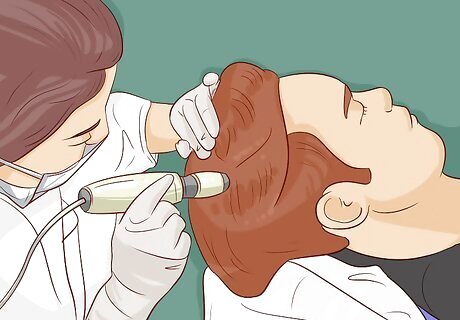
Restore and revitalize hair by working at a hair restoration clinic. As a non-medical trichologist working at a hair restoration clinic, there are a variety of positions available to you. You can work in the front office where you’ll prepare patients and sell products. You can also work as an assistant to the doctor, where you’ll consult patients and perform simple diagnostic tests. Reach out to hair restoration clinics in your area to find out more about the available positions.Tip: Hair restoration is a pretty niche field, so there will be a limited number of operations in your area. Look online to find hair restoration clinics in your area. Call each of them to find out what kind of positions are available. There are very few clinics that operate purely as trichology clinics, but you may have a few in your area if you live in a larger city.

Diagnose symptoms and prescribe treatments as a dermatologist. As a medical dermatologist with a specialty in trichology, you will meet with patients, examine scalps, order tests, prescribe treatments, and perform hair transplants. Some dermatologists operate out of a hospital while others have offices at a hair treatment clinic. Work at a restoration clinic if you want to exclusively focus on giving your clients a full head of hair. Work at a hospital if you want to diagnose patients and focus on the medical side of hair loss. After residency, search online and contact hospitals to find institutions looking for dermatologists that specialize in hair loss. You’ll have very few competitors in your field of specialty, so don’t get discouraged if you don’t find openings immediately. If you have a specialty in hair restoration surgery, get some experience working as a surgeon at a hospital or hair restoration clinic. After a few years, you’ll have the experience needed to start your own business!




















Comments
0 comment